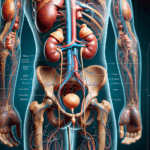
Physics – Class 9: Understanding Motion (Laws of Motion & Graphs)
Introduction
Motion is all around us—whether it’s a car moving on the road or a ball rolling down a slope. In Class 9 Physics (Chapter 8 – Motion), CBSE students learn the fundamental concepts of motion, speed, velocity, and acceleration. This blog will simplify these concepts with real-life examples and graphical representations.
Table Of Content

Key Topics Covered:
- What is Motion?
- Definition (Change in position with time)
- Types: Linear, Circular, Oscillatory
- Examples (Walking, Earth’s rotation)
- Distance vs. Displacement
- Distance (Scalar, total path length)
- Displacement (Vector, shortest path)
- Example: A circular track walk
- Speed & Velocity
- Speed = Distance/Time (always positive)
- Velocity = Displacement/Time (can be negative)
- Acceleration & Deceleration
- Formula: a = (v-u)/t
- Positive vs. Negative Acceleration
- Graphical Representation
- Distance-Time Graph (Slope = Speed)
- Velocity-Time Graph (Slope = Acceleration)
- Newton’s First Law of Motion (Inertia)
- Real-life example: Sudden brake in a bus
Exam Tips:
- Practice numerical problems on speed, velocity, and acceleration.
- Draw and interpret graphs for better understanding.
Conclusion
Motion is a fundamental concept in Physics that builds the foundation for higher studies. With consistent practice and real-world applications, mastering this chapter becomes easy!





